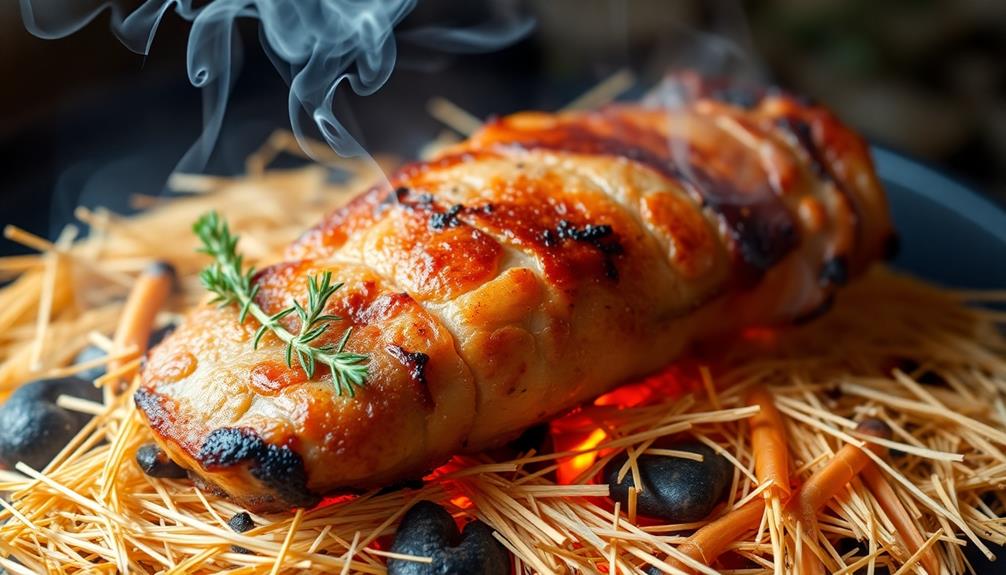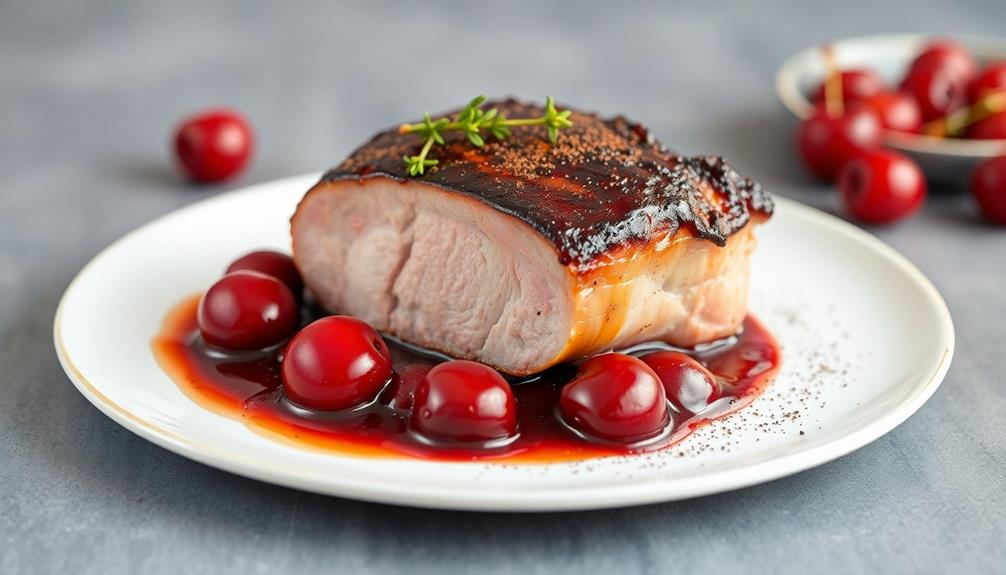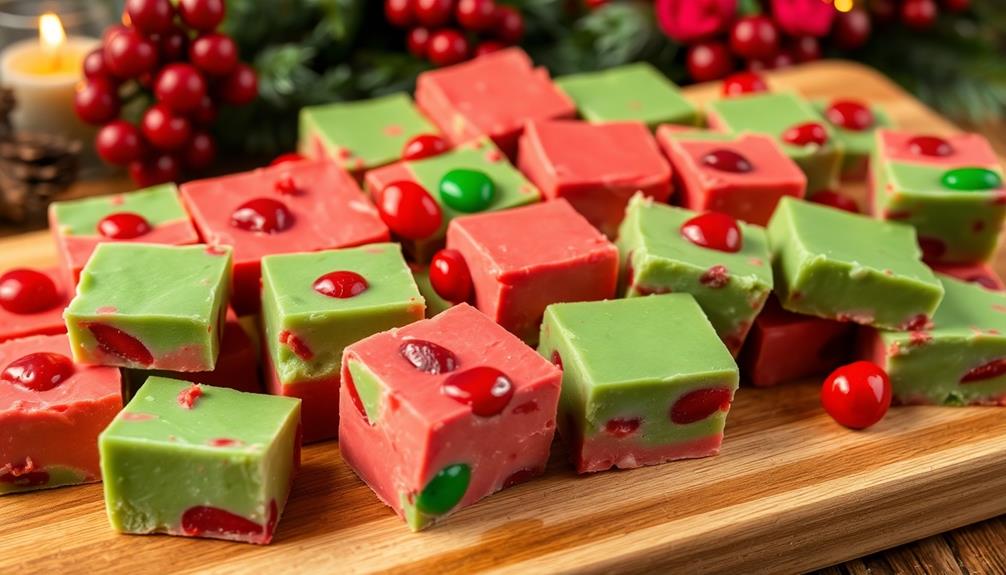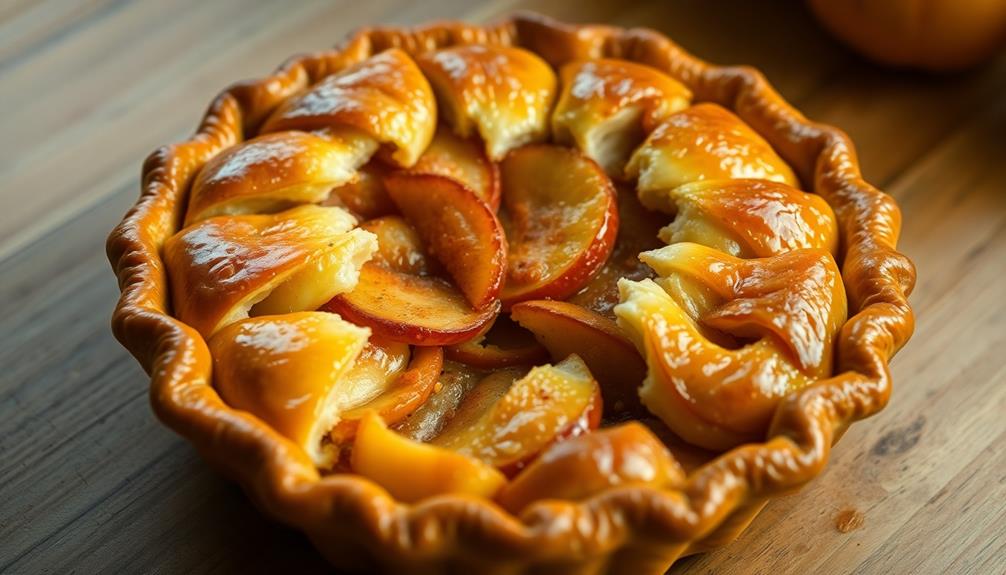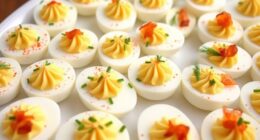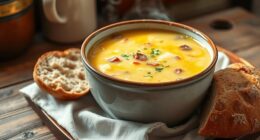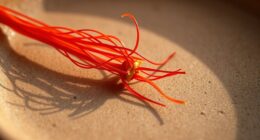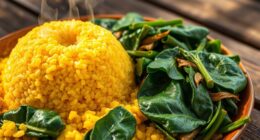Thumbprint cookies are the sweetest little treats that'll have your mouth watering! These classic holiday cookies start with a buttery shortbread-like dough that you get to shape into balls and press your thumb into, making a perfect little well for scrumptious fruit preserves. You can use all kinds of yummy fillings – raspberry, strawberry, even lemon or apple! Once baked to golden perfection, these cookies are so soft and melt-in-your-mouth delicious. Kids love helping make them, and they're a wonderful addition to any holiday cookie platter. Ready to get baking? There's so much more to discover about these delightful little cookies!
Key Takeaways
- Thumbprint cookies are a classic holiday treat with a history dating back to the late 1800s, inspired by traditional linzer cookies.
- The recipe involves pressing a thumbprint into dough to create a well for fruit jams or preserves, resulting in a soft, buttery texture.
- Thumbprint cookies are highly customizable, allowing for a variety of fruit fillings and optional additions like chopped nuts or chocolate drizzle.
- Baking thumbprint cookies can be a fun family activity, as children enjoy pressing their thumbs into the dough and selecting different filling flavors.
- Thumbprint cookies represent a balance of simplicity and creativity, making them a perfect dessert for any occasion.
History
Thumbprint cookies trace their origins back over a century, with the earliest known recipes appearing in the late 1800s.
These delightful treats were likely inspired by the traditional linzer cookies, which feature a thumbprint-shaped indentation filled with jam. As the story goes, resourceful homemakers started using their thumbs to create these handy little wells, making them perfect for holding a dollop of your favorite preserves.
Over time, the thumbprint cookie became a beloved classic, popping up in church cookbooks and on holiday platters everywhere.
Today, you can find endless variations, from chocolate-dipped to nut-topped, but the original buttery goodness and satisfying jam filling remains a timeless favorite.
Whether you're baking them for a special occasion or just because, thumbprint cookies are sure to bring a smile to your face and warmth to your heart.
Recipe
Thumbprint cookies are a classic holiday treat that are easy to make and endlessly customizable. These buttery bites are made by pressing a thumbprint into the center of each cookie before baking, creating a perfect well for a dollop of your favorite jam or preserves.
They can be a delightful addition to any dessert spread, especially alongside other fun desserts like Dirt Cups, which are perfect for kids' parties. The soft, tender texture of these cookies pairs beautifully with the sweet, fruity filling. Plus, they're a fun project to tackle with little helpers in the kitchen, as the thumbprint step allows for plenty of creative expression. If you’re looking for a delicious pinwheel cookie recipe, these thumbprint cookies are a great place to start. The combination of the buttery cookie base and the jammy center is simply irresistible. Plus, they make for a stunning presentation on any dessert table. So, gather the ingredients and get ready to bake up a batch of these delightful thumbprint cookies!
Ingredients:
- 1 cup unsalted butter, softened
- 3/4 cup granulated sugar
- 1 egg
- 2 teaspoons vanilla extract
- 1/4 teaspoon salt
- 2 1/4 cups all-purpose flour
- 1/2 cup assorted fruit jams or preserves
Preheat your oven to 350°F (175°C). In a large bowl, cream the butter and sugar together until light and fluffy. Beat in the egg and vanilla, then stir in the salt and flour until a soft dough forms.
Scoop tablespoon-sized balls of dough and place them 2 inches apart on parchment-lined baking sheets. Use your thumb to gently press an indentation into the center of each cookie. Bake for 10-12 minutes, until the edges are lightly golden.
Remove from the oven and immediately use the back of a spoon to re-press the indentations. Allow the cookies to cool completely on the baking sheets before filling the centers with your desired jam or preserves.
For best results, be sure to use room temperature butter and avoid overbaking the cookies, as they can become dry and crumbly. Experiment with different jam flavors to find your favorite combination, or even try adding a sprinkle of chopped nuts or a drizzle of melted chocolate for extra flair.
Cooking Steps
First, you'll need to preheat your oven to a toasty 350°F.
Next, cream the butter and sugar together until they're light and fluffy.
Then, mix in the egg and vanilla to give your cookies that irresistible flavor.
Time to add the dry ingredients and roll the dough into little balls – get ready for some delicious thumbprint cookies!
Step 1. Preheat Oven to 350°F
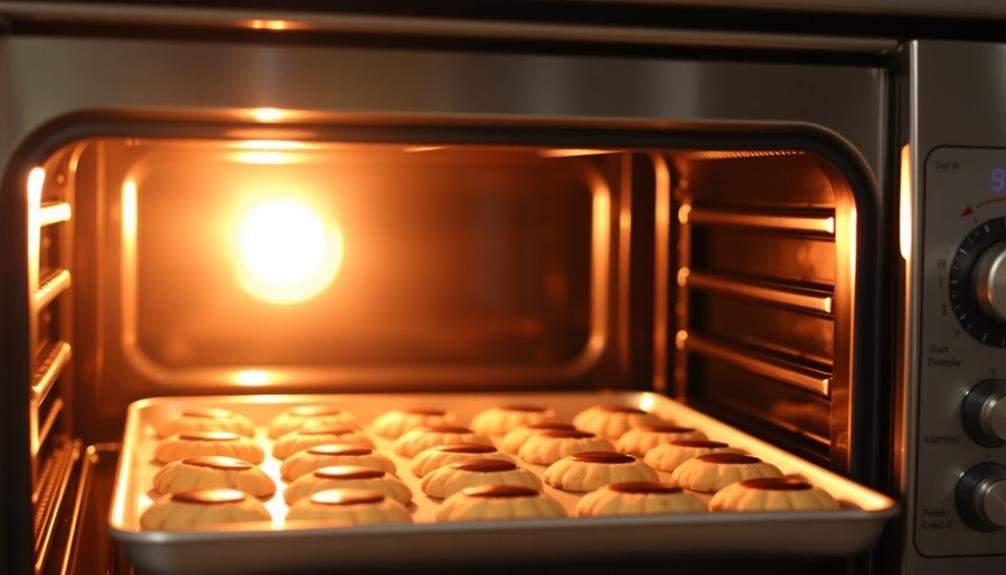
Preparation is key when baking delightful treats. To start, you'll want to preheat your oven to a toasty 350°F. This temperature is just right for ensuring your thumbprint cookies bake to perfection.
While the oven is warming up, you can gather all your ingredients and tools. Having everything ready to go makes the process super smooth and stress-free.
Once the oven is at the perfect temp, you can pop your cookies in and let the magic happen. The delicious aroma of freshly baked thumbprints will soon fill your kitchen, making your mouth water in anticipation.
As the cookies bake, you'll notice them turning a beautiful golden brown. This is your cue that they're almost ready to come out and cool. Just be sure to keep an eye on them, as oven temperatures can vary.
With a little patience, you'll have a batch of warm, irresistible thumbprint cookies ready to enjoy. Yum!
Step 2. Cream Butter and Sugar Together

To begin, cream the butter and sugar together until the mixture is light and fluffy. This step is really important because it helps create the perfect texture for your thumbprint cookies.
You'll want to use a hand mixer or stand mixer to get the butter and sugar nice and creamy. Cream them together for about 2-3 minutes, scraping down the sides of the bowl as needed.
The butter should be at room temperature, so it'll blend easily with the sugar. Once the mixture looks smooth and fluffy, you're ready for the next step.
You'll notice the color will become paler as you cream the butter and sugar – that's exactly what you want! This creaming process traps tiny air bubbles, which will make your cookies nice and soft.
Keep an eye on it and stop mixing once the texture is just right. Now you can move on to adding the other ingredients and shaping your thumbprint cookies!
Step 3. Add Egg and Vanilla
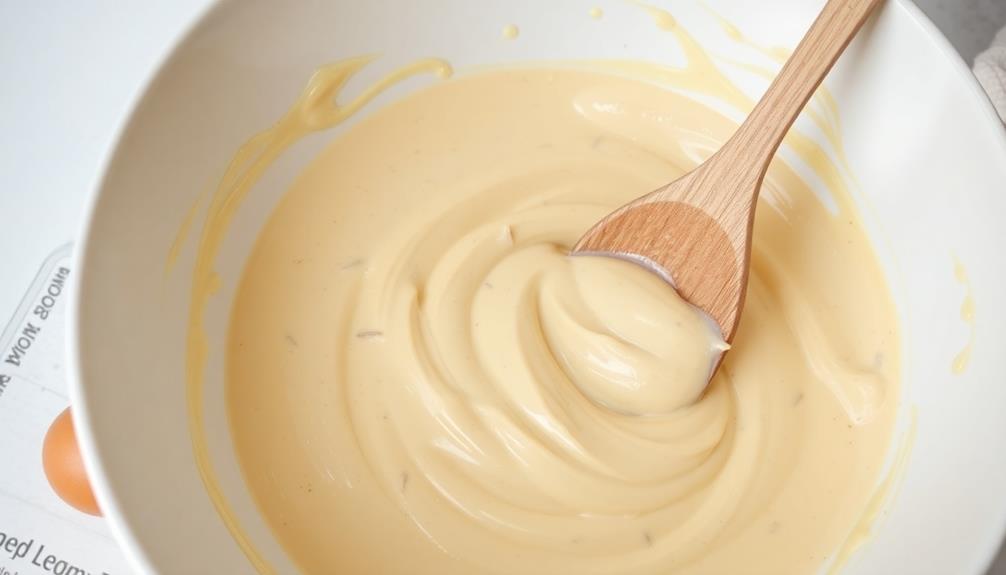
After creaming the butter and sugar to perfection, you'll now add the egg and vanilla to the mix. Crack the egg into a small bowl, being careful not to let any eggshell bits fall in. Use a fork to gently whisk the egg until it's nice and smooth.
Now, add a teaspoon of vanilla extract and give everything a good stir. The sweet vanilla aroma will start to fill the air, making your mouth water in anticipation. To further enhance your baking adventures, consider using flavors inspired by popular ice cream varieties like Birthday Cake or Cotton Candy.
Slowly pour the egg and vanilla mixture into the creamed butter and sugar, mixing it all together with a wooden spoon or your trusty electric mixer. Keep mixing until the dough is silky smooth and fully combined.
Yum, can you already imagine how delicious these cookies are going to be? The egg helps bind everything together, while the vanilla adds that signature flavor we all know and love.
Get ready, because the next step is shaping these thumbprint cookies into perfection!
Step 4. Add Dry Ingredients
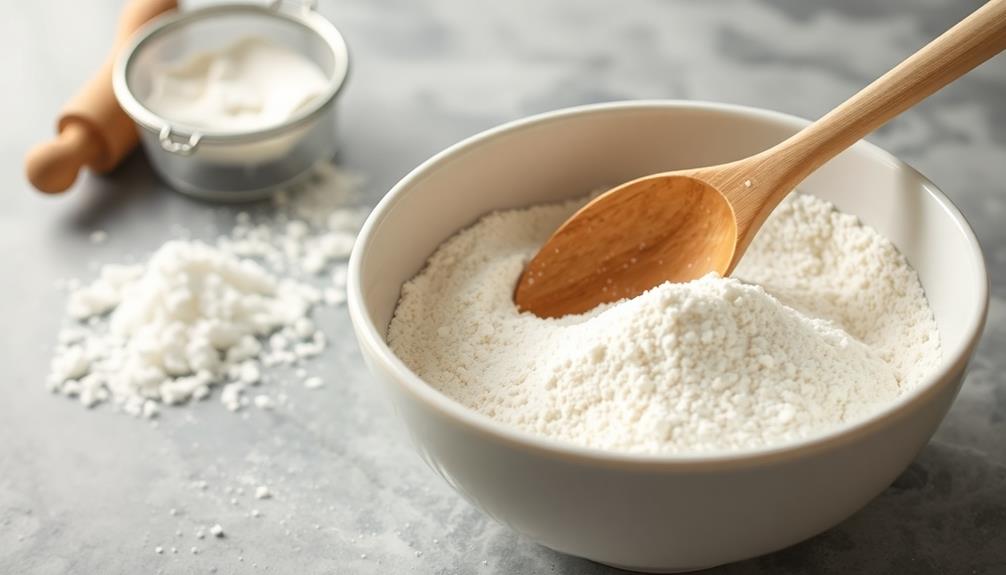
With the wet ingredients now incorporated, it's time to add the dry components. In a separate bowl, whisk together the all-purpose flour, baking powder, and a pinch of salt.
The flour will give your cookies structure, while the baking powder acts as a leavening agent, helping them rise to fluffy perfection. The salt enhances all the flavors, making each bite simply delightful.
Gently pour the dry mixture into the bowl with the creamed butter and sugar. Using a wooden spoon or a sturdy spatula, fold the ingredients together until a soft dough forms.
Be careful not to overmix, or your cookies might end up tough. The dough should come together easily, with no dry pockets remaining.
Now you're ready to roll up your sleeves and start shaping those thumbprint cookies!
Step 5. Roll Dough Into Balls
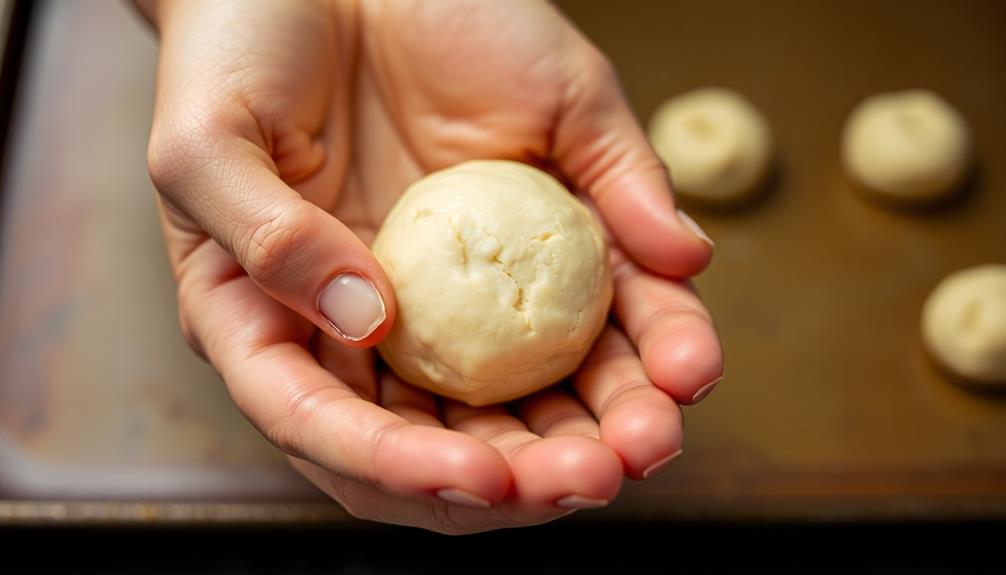
Begin by rolling the dough into small, uniform balls. Use your hands to gently scoop up a bit of the dough and roll it between your palms until it forms a smooth, round shape. Make sure each ball is about the same size so they'll bake evenly.
As you roll, imagine the dough is a little snowball – just don't pack it too tightly!
Once you've rolled all the dough into balls, it's time to get creative. Gently press your thumb into the center of each ball, making a little indentation. This is where you'll add the delicious jam or filling later.
Be careful not to press too hard, or you might end up with cookies that are misshapen.
Arrange the dough balls on a baking sheet, making sure to leave a bit of space between each one. They'll need room to spread out as they bake.
Now you're ready for the next step – popping these tasty treats in the oven!
Final Thoughts
Thumbprint cookies are a classic holiday treat that can be enjoyed year-round. These charming little cookies are the perfect way to add a personal touch to your baking.
Once you've rolled the dough into delightful balls and pressed your thumbprint into each one, you can fill the indents with all sorts of delicious jams and preserves. The possibilities are endless!
The best part about making thumbprint cookies is that you can get the whole family involved. Kids will love pressing their thumbs into the dough to create the signature indents.
And everyone can have fun choosing their favorite fillings to complete these tasty treats. Whether you opt for classic flavors like raspberry or strawberry, or get adventurous with unique jams, each cookie will be a unique work of art.
Frequently Asked Questions
How Long Can Thumbprint Cookies Be Stored?
You can store thumbprint cookies for up to a week in an airtight container at room temperature. For longer storage, they can be frozen for up to three months. Just be sure to thaw them before serving.
Can I Use Different Fillings for the Cookies?
Definitely! You can experiment with various fillings for your cookies. Whether it's fruit preserves, chocolate ganache, or even savory options, the possibilities are endless. Get creative and find your favorite flavor combinations.
Do Thumbprint Cookies Require Refrigeration?
Thumbprint cookies don't necessarily require refrigeration, but it depends on the filling. If you're using a filling that's perishable, like fruit or cream, you'll want to keep the cookies chilled to prevent spoilage.
Can I Freeze Unbaked Thumbprint Cookie Dough?
Yes, you can freeze unbaked thumbprint cookie dough. Simply scoop the dough onto a baking sheet, freeze until firm, then transfer to an airtight container or bag. When ready to bake, thaw in the fridge overnight.
Are Thumbprint Cookies Gluten-Free or Vegan?
You can make thumbprint cookies gluten-free by using gluten-free flour. To make them vegan, substitute the butter or eggs with plant-based alternatives. Adjust the recipe accordingly to achieve the desired texture and flavor.

